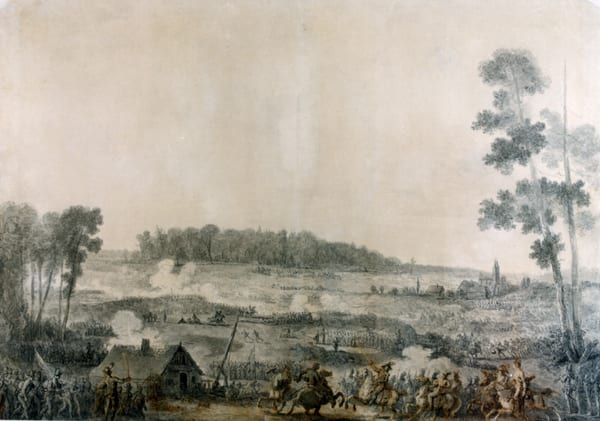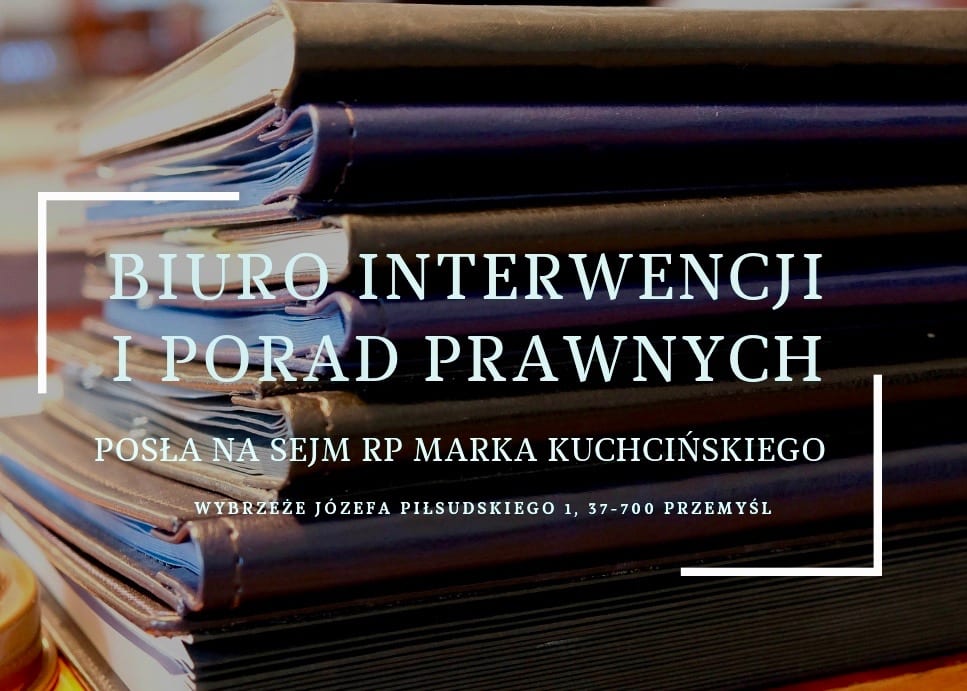On June 18, 1792, King Stanislaw August Poniatowski established the Order of Virtuti Militari, the highest Polish military decoration, to commemorate the victory in the battle of Zieleniec, during the war in defense of the May 3rd Constitution. The awarding of the first medals took place on June 25, 1792 at the Polish army camp in Ostrog in Volhynia.
The Order of Virtuti Militari is the oldest military order awarded in the world to date. The idea of establishing the order for military merits arose during the Polish-Russian war lasting since May 18, 1792, also known as the war in defense of the May 3 Constitution.
The initiator of the decoration was King Stanislaw August. On June 12, he wrote in a letter to his nephew, Prince Jozef Poniatowski: "It has occurred to me to send you a kind of oval medals, which on one side will bear my name, and on the other the inscription +Virtuti Militari+ (...) These will be silver medals for privates and gold for officers".
Piotr Derdej: "The Virtuti Militari is a true order, or order of chivalry. Its statutes, enacted after the war, stipulated that the knights would form a brotherhood whose sole purpose would be to restore the former glory and splendor to their homeland.
The first medals with the inscription "Virtuti Militari" on their reverses (Latin for Military Virtue or Soldier's Bravery) were struck on June 15 in Warsaw. On the obverses of the medals was the inscription "SAR" (Stanislaus Augustus Rex) and an image of a royal crown and two palm branches.
Three days later the Polish army fought a hard-fought but victorious battle with the Russians at Zieleniec. It was the first victory of the Polish army since the relief of Vienna by Jan Sobieski in 1683.
After the battle, Prince Poniatowski, commanding the Polish army, prepared a register of people who distinguished themselves by their valor in battle, and then sent it to Stanislaus Augustus.
On June 22, staying in the camp near Kozienice, Prince Poniatowski received a reply back from the king. "(...) with the greatest haste I send you twenty gold medals, marked with the motto +Virtuti Militari+, for significant officers, who distinguished themselves in the last battles of the current campaign" - wrote the king.
He also made remarks about how the order should be worn - "on top of the dress" and explained: "if time and circumstances permit I will establish the formal institution of a military order".
Beside Prince Poniatowski, there were 15 persons on the list of those who were to be decorated with the Order of the First Class (the King sent 4 gold medals additionally), including among others: Generals Tadeusz Kościuszko and Michał Wielhorski as well as Prince Eustachy Sanguszko. The presentation of medals took place on June 25th in the Polish army camp in Ostrog in Volhynia.
King also sent 40 silver medals (second class) if there was a need to honor non-commissioned officers and privates for meritorious service.
"The Virtuti Militari is a true order, or order of chivalry. Its statute, enacted after the end of the war, stipulated that the cavaliers would form a brotherhood whose sole purpose would be to restore the former glory and splendor to their homeland," explained Piotr Derdej ("Zieleniece-Mir-Dubienka 1792").
The statute provided for the creation of five classes of the order: Grand Cross with Star, Commander's Cross, Knight's Cross, Gold Medal and Silver Medal. Following the example of the Order of Maria Theresa, the decoration was given the shape of a cross with the year "1792" and the coats of arms of the Crown (Eagle) and Lithuania (Pahonia). The Order was to be worn on a blue ribbon with a black border.
The Order of Virtuti Militari is the oldest military order awarded in the world to date. The idea of establishing the order for military merits arose during the Polish-Russian war lasting since May 18, 1792, also known as the war in defense of the May 3 Constitution.
Stanislaus Augustus became Grand Master of the order and a Knight of the Grand Cross; after the defeat in the war of 1792, the chapter of the order was led by Prince Poniatowski.
As Derdej wrote, "If we take into account that the Order consisted of the most courageous, battle-tested military men and recall its ideological assumptions, it turns out that the Cavaliers of the Order were to be the last resort for the Republic of Poland, i.e. they were to form a military conspiracy (...) to prepare the overthrow of the Targowica and the liberation of the country from Russian occupation.
At the end of August 1792 the Targowica Confederation annulled the order, which was restored in November of the following year by the Sejm of Grodzienski. The order was abolished in January 1794 by the decision of the Indolent Council pressed by the Russians.
The Order was reactivated at the end of 1806. After the creation of the Duchy of Warsaw by Napoleon Bonaparte the Order changed its name to The Military Order of the Duchy of Warsaw. The inscription "SAR" was replaced by the motto "Rex et Patria" (King and Fatherland).
In 1815, when the Kingdom of Poland was established, the decoration changed its name to the Military Order of Poland. In 1831, the November insurgents restored the Order of Virtuti Militari in its original version.
After the defeat of the uprising Tsar Nicholas I abolished the order. In its place the Polish Badge of Honour for War Merits was established. As explained by Andrzej Cz. Żak, the director of the Central Military Archive in 2012, "This decoration was Polish only in name - the Tsar decided that it was to +remember the exceptional merits of our army during the warfare against the Polish rebels+. The order (...) had five classes and a ribbon in the colors of Virtuti Militari, on which the date of the fall of the uprising - 1831 - was placed". ("1792-2012. 220 Anniversary of the Order of Virtuti Militari").
Restitution of the Order took place after Poland regained its independence in 1918. Act of August 1, 1919 restored the Military Order of Virtuti Militari, which retained five classes and the shape of the cross. The inscription "Honor and Fatherland" was placed on its reverse side.
On March 25, 1933, under another parliamentary act, the name of the decoration was changed to the War Order of Virtuti Militari. A new element was the placement of the date "1792" on the reverse of the cross.
Among the chevaliers of the order were marshals: Louis Davout, Jozef Pilsudski, Ferdinand Foch, as well as many Polish and foreign military commanders and ordinary soldiers - participants in the Polish-Soviet War, the campaign of 1939, soldiers of the Home Army and the Polish Military Forces in the West. The youngest person honored with the medal was 13-year-old Antoni Petrykiewicz, who died fighting Ukrainians for Lviv.
During the period of the Polish People's Republic the order changed its appearance; the crown was removed from the cross and the inscription "PRL" was added. The chapter of the order was abolished and it was awarded by the Council of State (until 1952 it was awarded by President Boleslaw Bierut). In 1960 the name was changed to Order of Virtuti Militari.
The Order regained its pre-World War II shape only after the fall of communism in Poland. At that time the chapter of the Order was restored and it was agreed that it would be awarded only during the war or maximum 5 years after its end.
Among the chevaliers of the order were marshals: Louis Davout, Jozef Pilsudski, Ferdinand Foch, as well as many Polish and foreign military commanders and ordinary soldiers - participants in the Polish-Soviet War, the campaign of 1939, soldiers of the Home Army and the Polish Military Forces in the West. The youngest person honored with the medal was 13-year-old Antoni Petrykiewicz, who died fighting Ukrainians for Lviv.
After 1945, the order was awarded to Marshals Konstanty Rokossowski and Michal Roli-Zymierski. It was also awarded to General Ivan Serov, an NKVD officer bearing co-responsibility for the Katyn massacre, and General Secretary of the CPSU Leonid Brezhnev. These nominations caused widespread outrage and were cancelled by the first president of the Third Republic of Poland, Lech Walesa.
The Order was also given to banners and cities - Lviv, Warsaw and French Verdun received it.
"The Order of War Virtuti Militari decorated about 26 thousand people. Among them there were many outstanding commanders, simple soldiers, also children. The Knights of the Order, in addition to those imposed by the communist authorities, were always guided by the most beautiful soldierly virtues, such as honor, courage, loyalty and love of the Fatherland," - summarized in 2012. Andrzej Cz. Żak.
source: Dzieje.pl
Battle of Zieleniec on June 18, 1792., Jean-Pierre Norblin



